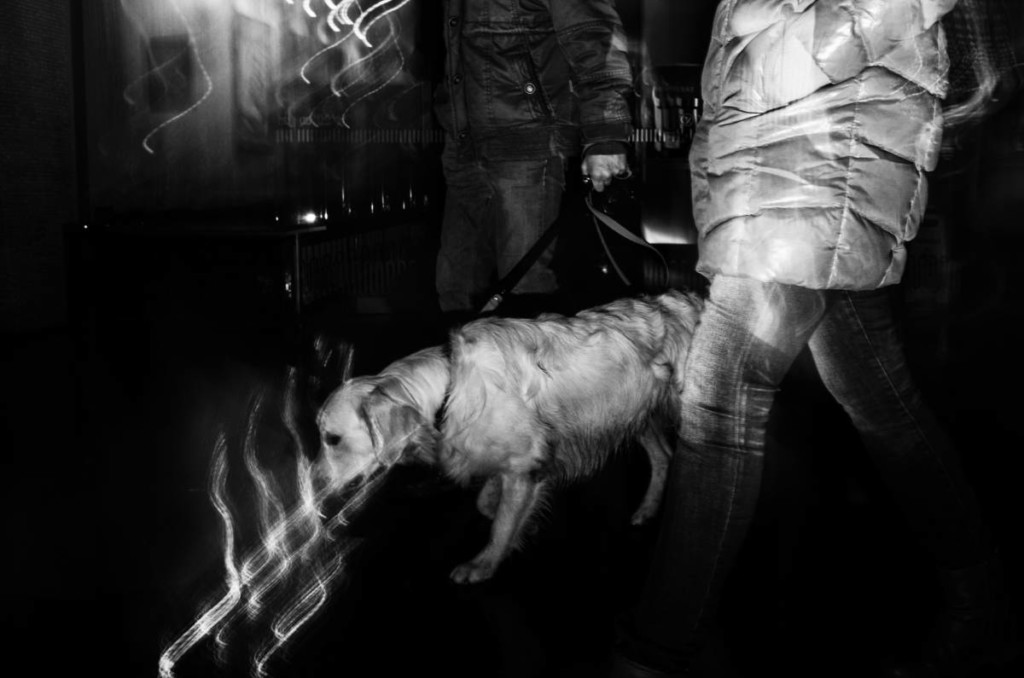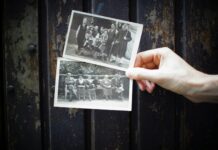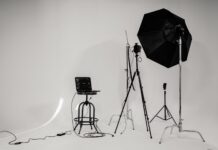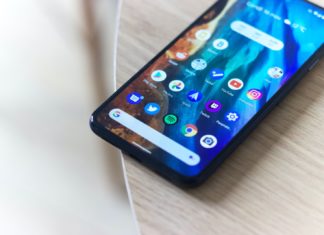Have you been shooting on the street in the same manner for as long as you can remember? Then mixing things up with some new fun and educational Street Photography challenges can help you develop skills in certain areas that you might be unfamiliar with right now. Setting yourself up for some tasks also helps you overcoming uninspirational slumps and getting out of your comfort zone. A good Street Photographer needs to have skills in a lot of different fields and just like any athlete, it is worth it to isolate them and train them individually.

Street Photography Challenges to go
Below are Street Photography challenges that you could try on your next photo walk and hopefully you can integrate what you learn from then in the future and make you a well-rounded Street Photographer.
1Wear your Camera as an accessory

Walking on the street with an open camera was more difficult than expected in the beginning. I felt like I drew all the attention and people would eyeball my camera. This made it very hard to focus on taking pictures because every photo felt artificial. Street Photography is very challenging, but if it feels natural becomes a lot more fun.
To get more comfortable with your camera, you should have it around your neck for the next week anywhere in public. Not to take images, but to get fully accustomed to the new look.
Goal
Become more confident when having your camera with you and don’t feel like all eyes are on you. A lot of the attention is only imaginary and most people don’t care about your camera anyway.
Having a camera with you won’t be something “special” and make you nervous, thanks to this little Street Photography challenge.
2Reduce The Frame
When you discover an interesting scene that you want to photograph take a closer look at the whole frame. Inspect every object in the frame and think for yourself if it is necessary for the story of the image. If it isn’t needed and doesn’t improve your picture in any way, then get rid of it.
The best way to deduct anything that isn’t particularly necessary is by going closer or altering the angle. Going closer makes the frame more narrow and erases everything that was close to the edges. Get so close, until there is nothing left on the edges that you’d like to eliminate
Goal
Street Photography is very different from other genres in the sense, that we aren’t able to influence the scene directly. That leaves us with predefined locations we have to work with. A common mistake is, that we include too much in a single picture just for the sake of “filling the frame”.
The problem lies in including objects that are totally unrelated and don’t add anything to the main story. Focus on the props that you need to tell the story, otherwise you won’t be able to narrate one cohesive storyline but get lost in many loose strings.
3One arm-challenge

When asked why he shoots so close Bruce Gilden answered that he always an arm away so he can’t get sucker punched. There still lies a valuable lesson and that is to get closer to the subject.
For this task, only take images from subjects that are one arm-length away. Ideally, you have a short fixed focal length around 35mm or less. Pre-Focus to around 1 meter so you are forced to get close to get your subject in focus.
Move fast and get close without disturbing the candid scene.
Goal
“Getting Closer” is one of the most basic tips that you can get. You don’t need to be good at photography or have a lot of experience under your belt to fulfill this task, but it will have one of the biggest impacts in terms of image quality.
This task goes hand in hand with the previous one in the sense, that you will probably fill your frame only with the main subject, which automatically excludes anything that wasn’t intended to be in the image.
You will also overcome your social anxiety to invade other’s space and realize that most people will mind their own business more than care about you taking a picture.
Another takeaway is how to become “invisible” while photographing. Street Photography is meant to capture candid moments without any outside interference. Getting close without altering the scene requires you to behave with confidence and natural.
4Standing in one place
At first, I felt very uncomfortable when photographing on the street. To get rid of my nervousness I walked very fast and wasn’t very calm at all. The uneasiness shows in the body language and can be sensed by people on the street very easily. Most of our communication happens subconsciously and if we aren’t in a good state, people will know it.
Instead of walking and getting right to the shot use the following Street Photography Challenge and stand in one place – preferably a spot with a lot of pedestrians coming by. In the beginning, it might feel weird, to stand out and not going with the flow, but very fast you will be accustomed to the situation and not feel any different.
Goal
As photographers, we often feel like we attract an unnatural amount of attention. While this is partly true when we show signs of nervousness, a lot of it is the faulty interpretation of our mind. Standing in one place for a long amount of time will show, how comfort helps you to become more invisible and make a less hostile impression on your surroundings.
On a second note, you will learn how to work a scene very thoroughly. The longer you stand in one place, the more you will notice new interesting details that you missed during the first minutes. Additionally, you might be amazed how differently the same location can present itself later in the pictures. If you are lucky and the sun comes out, comparing the light
If you are lucky and the sun comes out, comparing the light from beginning to end could also make a great series and show how the image is influenced by light and shadows.
51.000 Images
I am very hesitant when photographing on the street. A usual session of 2 to 3 hours on the street gets me 20 to 50 images I can choose from. While I try to be very selective what I photograph, due to the digital nature of images these days there is actually no reasonable limitation on images.
While I am quite confident with my success rate at the moment and out of the 20 to 50 images are usually 1 or 2 good images, I am sure that I still miss a lot of pictures that I should have gotten. Force yourself the next time you are out on the street to load up your SD-Card and push the shutter button without a break.
Goal
To get such an amount of images you need to be work very hard to spot a scene and then fully work it. If you take this challenge seriously you will reach a state where you are not laying your camera aside or lower it from your eye. Instead, you will reach the “zen” status and experience the presence very consciously.
Also, it can be very difficult to go from 0 to 100 when you only take very few images. Continuously shooting keeps your attention on a high level just in case something interesting might appear. In the end, you find your own recipe for success and this challenge pushes your limit towards the upper boundary.
6Same Camera & Lens Combination

Use the same camera and lens for a month. Don’t even think about switching to other gear because it might yield better results. If you are changing your gear very frequently, you will be more occupied with learning to control your gear than actually focusing on the art of photography.
For a month of time, you will not spend time thinking about which camera might be better, which gear you still want to buy and how it will improve your photography. The best camera is the one you have with you and you will use it to its maximum potential.
Goal
Every time you question the outcome of an image you won’t consider changing the camera. The only thing you can work on is improving your photography itself. Work on your composition, personality and skills as a photographer and not on your camera gear. Also, it is better to know one camera from the inside out, than five half-assed.
7Switch to Color when you mainly shoot B&W and vice versa
Do you have a favorite style of shooting and almost never try the opposite? Then you should take your time to explore the other world and explore how colors work or how light & shadows and influence the scene.
You will be fascinated by how different the world can look on the other side due to these Street Photography challenges.
Goal
Color and Black & White Photography require two very different ways of seeing and interpreting a scene. B&W puts an emphasize on the contrast of light and shadow while colorful images include every facet in between black and white.
Combining contrast-rich scenes in your color work can create a very new style in your photography and maybe inspire you to try something new.
8Don’t look at your Images immediately

With digital cameras today we have the luxury of seeing our results in an instant. Rather than focussing on the next image, we waste our time by looking at the past. The only reason to look at the screen is to judge the exposure of the image and if it needs to be changed. Anything else can’t be gained by looking at the previous image.
If the composition wasn’t perfect or the subject isn’t shown in the best possible way shouldn’t affect your future work. Instead of contemplating about the image you just did, focus on the next image. Even if you look at the screen and are content with the image you should work the scene just a little bit more to see if you can squeeze out an even better picture.
When coming back from the photo hunt, don’t judge your images immediately. Let them “ripe” a little bit before editing them. Come back a month later with a fresh mind and take a neutral look at them.
Goal
The taste of our own images is very subjective and askew. It is hard to judge a picture objectively when they are still filled with your personal emotions. Leaving the images alone for some time helps you to gain some distance and being less connected to them.
It is probably a lot easier for you to judge images from others that you don’t know. You are able to isolate the image from the photographer and not mix these two things together. This gets hard when you have to review your own images.
Therefore, taking the analog approach and taking a look at them after a few weeks or months can help to gain a more neutral view.
9Post 5 “Failures” on Social Media
Social Media plays a huge role for a lot of Street Photographers. We are able to share images showing our newest trophies, or you might stumble across helpful articles. But when it comes to showcasing your work you might feel pressured to follow a certain style and rules to gain the maximum amount of likes. This pressure can influence how you work and in the end, you might be photographing for your followers first and yourself second.
Overcome this peer pressure by posting 5 images that you deem as failures or that are at least very different from your usual style. They might not get the same amount of “likes” compared to your usual suspects, but are you really that focused on the recognition you get from Social Media?
Goal
In today’s world, we often feel dependent on the opinions of others. Social Media facilitates this behavior and if you are active on platforms like Instagram or Facebook you probably find yourself weighing the attention of your followers very highly. While Social Media has a lot of positive sides, it should never influence your photos in a way that you aren’t 100% comfortable with them.
Posting 5 images that are different from your other work takes away your “fear” of not getting enough likes. You will notice that it doesn’t make any difference how many likes you get and that it is more fulfilling to post an image that you personally like, but doesn’t receive a very high amount of engagement, than an image that doesn’t represent you completely.




































